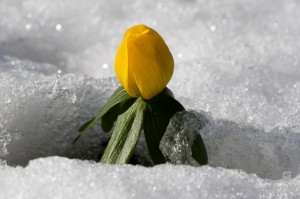OK, so tinned tuna can be OK, depending on the way it is caught (assuming it is Skipjack tuna) cod and haddock, not so sure, bit debatable; this time it depends not only on the method of catching – line caught only please, but on the place where it is caught. Next on my list, purely because they are fish that are commonly sold and that I enjoy(ed) eating are sole and plaice, both, unfortunately, featuring on the Greenpeace red list.
So, for starters, these are both flat fish, and, as such, live along the sea bed. This means that they are usually caught by beam trawling. This is a particularly destructive form of fishing for numerous reasons. Beam trawling involves dragging a large beam across the ocean floor behind which is pulled a large net. Typically trawlers pull one net on each side of the boat. Some also have ‘tickler chains’ in front which stir up the ocean floor so more creatures are caught up in the following net. As you can imagine this is a pretty indiscriminate form of fishing and the bycatch including immature fish, crabs, coral etc is huge (up to 70% by weight).
However, there is an alternative, Danish Seine fishing, which is less damaging to the ocean floor and uses less fuel than beam trawling (hurrah). This uses a conical shaped net to catch the fish; although there is some ocean floor damage and some bycatch it is much less than the alternatives. Gillnets are also a better option, these catch the fish in the mesh of the net, obviously, the mesh has to be of the correct size so that small fish can swim through.
So, onto the sustainability of the fish themselves. Plaice – current advice is to avoid fish from south west Ireland, west of Ireland, western channel and Celtic sea fisheries, whereas those of the Irish sea are thought to be sustainable. However, there is conflicting advice on North Sea stocks, Greenpeace stating that beam trawling in this area has caught too many small fish and stocks are unsustainable whereas the Marine Conservation Society currently states that North Sea stocks are ‘healthy and fished sustainably’ – no wonder eating fish causes such a moral dilemma!
Sole – advice at the moment is that, again, beam trawling has had a massive impact on stocks, and the North Sea and Irish Sea stocks are depleted, so best avoided. Choose fish caught with more sustainable methods, avoid small fish and avoid fresh fish caught between April and June. Both Greenpeace and the MCS claim that Celtic sea stocks are sustainable (if, like myself you are not wise in the ways of seas, the Celtic Sea is that part of the Atlantic Ocean off the south coast of Ireland and the south-west coast of England and Wales).
So, where to buy the holy fish grail? At the moment I cannot fully answer that but hope to have a more in-depth review of all of the supermarkets in the coming months. Having looked at the websites of the ‘better’ supermarkets, Waitrose and M&S, it appears that Waitrose use only Danish Seine methods and are no longer using smaller fish, although M&S are ‘leading the drive to reduce the use of … beam trawls’ (does that mean they do use them or not?) – it would appear that Waitrose are ahead of them there.
Waitrose fish is from the North East Atlantic, and M&S is from the North Sea, English Channel and around Iceland. Are these sustainable fisheries – the packaging claims that they are, and the North East Atlantic and Iceland are not mentioned in good or bad terms on the MCS or Greenpeace websites, the English Channel and North Sea being more questionable. A quick Google search reveals the North Atlantic area to include parts of the Atlantic west of Ireland, areas north east of Iceland and a pocket in the Norwegian Sea.
So, my conclusion, plaice and sole are in trouble, mainly due to unsustainable fishing methods, and, those caught around the British shoreline seem particularly at risk. The information about flatfish from other areas is not so clear, but this may be because they are of less immediate concern. As ever, it appears the fishing methods are crucial and any fish caught by beam trawling, and, I would go so far as to say any fishmonger who sells fish caught using beam trawlers, should be avoided. I feel a little more at ease buying my lemon sole or plaice from Waitrose, but I will probably be doing so less often than previously (perhaps once a month), M&S still don’t get my vote as they seem to be behind Waitrose both on fishing methods and sustainable fisheries.
